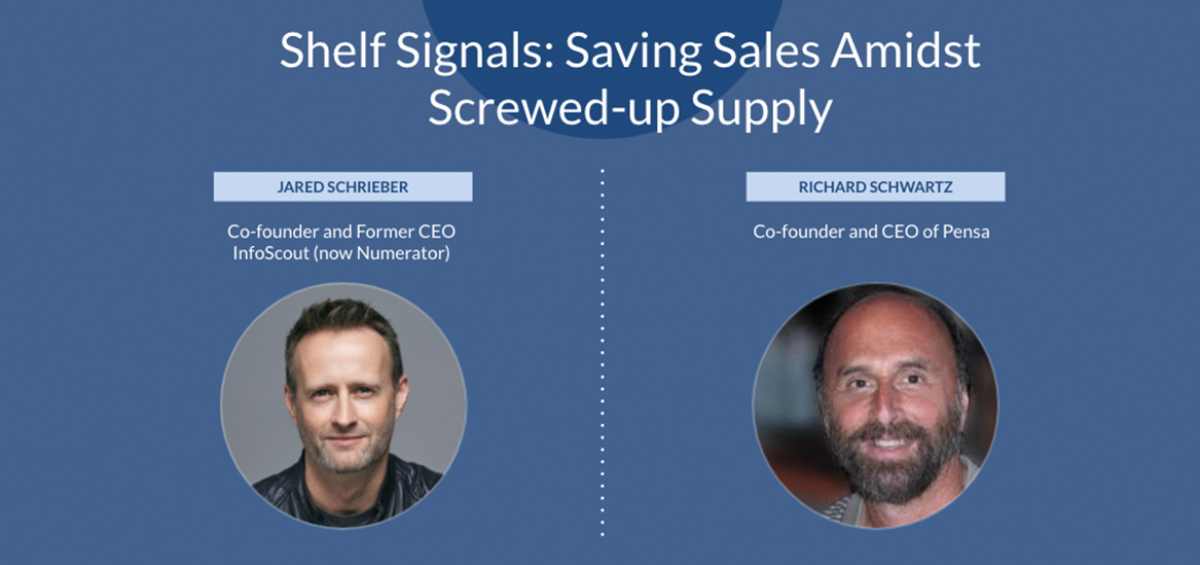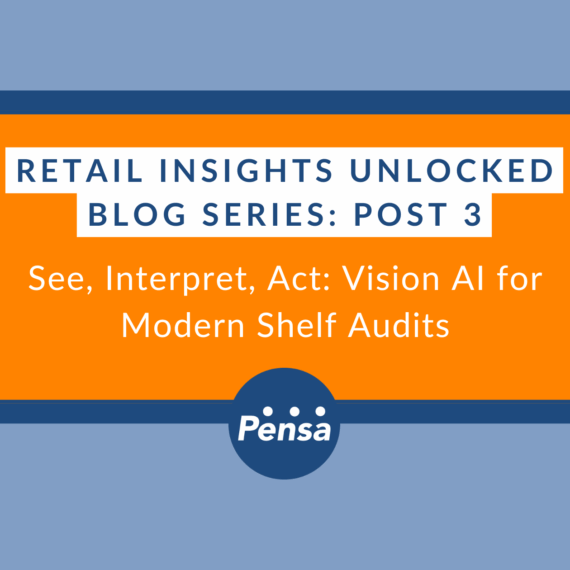Key Takeaways from the webinar Shelf Signals: Saving Sales Amidst Screwed-up Supply. Maximizing CPG Revenue in a Time of Constrained Supply and Unconstrained Demand.
When 2021 began, not even Nostradamus could have predicted the supply chain disruptions that would come over the following 12 months.
I recently had the opportunity to listen to a fascinating webinar featuring Jared Schrieber and Richard Schwartz about the current market environment and how brand manufacturers and retailers can succeed amidst the impact of unpredictable demand in a constrained supply chain. You can view the replay here.
The webinar described how a unique combination of factors in today’s market has created a “bullwhip effect” that turns demand forecasting into a veritable crapshoot for brands and retailers.
Here are the key takeaways that bring this challenge to life:
- Constant shifts (in unpredicted demand and constrained supply) mean that historical demand signals that have been used for forecasting and replenishment may not be as useful as they were before.
- If you’re losing points of on-shelf availability (OSA) you are effectively losing points of all commodity volume (ACV). And since this metric is used as the top predictor of sales, you might as well yank 3 points out of your ACV, if your OSA is declining by that same amount. ACV is a lagging indicator while OSA is a leading indicator.
- OSA is no longer a constant variable, and therefore it cannot be ignored in terms of how you do your forecasting, planning, replenishment, or assortment allocation.
- You need entirely new approaches to identify not only when the point-of-sale data fails to reflect actual demand, but also to fill in the blanks to understand what role availability plays here.
Brands and retailers will need to stay nimble as they navigate through this prolonged storm of uncertainty.
Here are some other key themes from the webinar that bring these challenges to life and provide practical direction on how you can seize new opportunities for growth.
Distribution Is Key, but Legacy Demand Forecasting Approaches are Lacking
A noted retail data pioneer and the co-founder and former CEO of InfoScout (now Numerator), Jared recently conducted an exhaustive 4-year study of more than 25,000 brands via a million-person consumer panel reporting on a billion shopping trips. According to Jared’s research, a key common trait of breakout brand winners is effective distribution.
But as Richard, a serial technology innovator and CEO of Pensa Systems points out, Pensa’s analysis shows that when retailers calculate what’s on their shelves based solely on legacy Perpetual Inventory systems, they’re often inaccurate by nearly 20 points. In many cases, their perpetual inventory systems generate false positives where SKUs “present” in inventory actually aren’t on the shelf. So, they fail to order more inventory because they assume products are in stock and they don’t even know there’s a problem. The upshot: the consumer is left unfulfilled, and both the brand and the retailer lose revenue and erode loyalty.
Jared adds that there is an “age old problem” with point of sale (POS) data that can send inaccurate demand signals. Sales revenue drops at POS are often misinterpreted as lessening consumer demand when in fact sales are dropping because products are not in stock on the shelf. This issue becomes a perpetual problem that can lead to products being delisted at a retailer due to what is misinterpreted as languishing consumer demand.
If your product is not available to buy, don’t assume people will go somewhere else to find it. That rarely happens. Brands that lose shelf availability effectively lose points of ACV – the top sales predictor.
The consequences of a brand not having products on retail shelves are profound – not the least being the competitive threat where major rivals capitalize on the opportunity to steal market share. Unfortunately, out of stock rates are skyrocketing in many different categories due to the current state of supply chains.
Smart SKU Stocking
Even in the supply-constrained world, you need to allocate your supply through distribution. But where do you send your products? Which channels? When you ship them into the channel, do they wind up stockpiled excessively in certain stores? Are they making it into the ones that matter? How do you manage that? And how do you work contractually with the retailers?
That underscores the importance of understanding where to distribute scarce products and detecting early any signals about changes in demand. Knowing what’s happening on the shelf can help brands make quick changes in their SKUs to maximize sales.
Treat your SKUs as a portfolio in support of the brand. Think about allocation in such a way that you recognize it may not be possible to get every SKU fully stocked through every retail channel. Instead, take particular SKUs and variants and ensure that there’s at least some inventory for retailers where consumers shop for your brand. In other words, don’t over-allocate towards one retailer while completely shorting another retailer to wind up out of stock.
OSA is not a constant variable
Legacy approaches on shelf availability based on traditional point of sale (POS) technology and perpetual inventory are no longer sufficient. In the past, we took for granted that on-shelf availability was a constant, mostly because we didn’t really have a good way to measure it continuously anyway but during periods of immense disruption, constant on-shelf availability most certainly can’t be assumed.
And it’s not only on-shelf availability for your own brands but also for your competition, as they are going through the same wild demand and supply swings that you are……and what happens with them has a direct impact on your ability to satisfy demand for your own product.
This period of unpredictable supply and demand requires a new kind of source of truth about what’s available to sell, so that retailers, delivery partners and brands can respond proactively to the changes, making any necessary alterations. It’s a kind of a virtuous cycle. But the cycle only works if products are available.
The Pensa Difference
Both CPG brands and retailers need to consider new approaches to better identify when legacy POS and PI data systems are not reflective of actual demand. Currently, with all the distorted signals in the system and the contemporary changes in the shopper behavior, it becomes even more important than before to figure this out.
Here’s where Pensa comes into play. Our solution uses computer vision and AI to visually understand what’s on retail shelves, across all categories, down to the individual SKU. We can continuously see what’s out of stock or what’s running low. We can identify real shelf share and other conditions that relate to issues on the shelf, the supply chain or store operations. In the end, with so much on the line, brands can’t rely on guesswork; they need a verifiable source of truth for the retail shelf.







